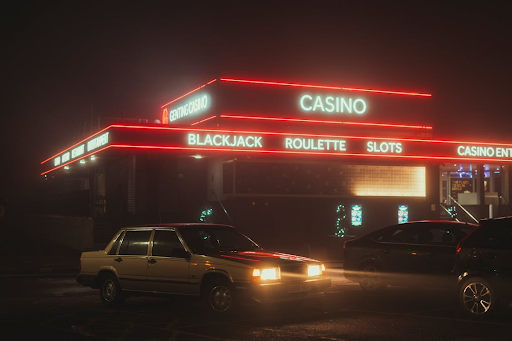When you step into a high-end casino, one of the first things you notice is the lighting. From soft glows over the poker tables to dramatic spotlights on roulette wheels, lighting sets the mood and influences how players feel. In the digital age, the same principle applies to live-streamed casino games. The right balance of brightness, color, and contrast not only improves visibility but also creates an immersive atmosphere that mirrors the excitement of a physical gaming floor.
Lighting is more than a technical requirement—it’s part of the storytelling and experience. Whether you’re watching from a laptop or smartphone, good lighting makes the difference between a flat, generic video feed and an engaging casino session that feels real and dynamic.
The Role of Lighting in Creating Casino Atmosphere
Casinos have long understood the psychology of lighting. Bright lights encourage energy, while dim, warm lighting helps players relax and stay longer. In live casino streaming studios, producers replicate this same effect.
For example, roulette tables often feature crisp, focused lighting on the wheel, drawing the player’s eye to the action. Backgrounds are softly lit in warmer hues, giving the sense of depth and comfort. Game shows, on the other hand, use dynamic, colorful LED lighting to create excitement and highlight fast-paced action.
Lighting essentially acts as a silent dealer—it guides attention, sets the tone, and enhances the emotional pull of the game.
Why Good Lighting Matters in Streaming
Unlike a physical casino, live-streamed games have an added technical challenge: the camera. Poor lighting can result in glare, shadows, or washed-out colors, all of which hurt the viewer’s experience. Professional studios invest heavily in lighting rigs because:
- Clarity is crucial. Players need to see the dealer’s gestures, card suits, and spinning wheels clearly.
- Trust depends on transparency. Well-lit environments assure players that the game is fair and that no detail is hidden.
- Immersion requires aesthetics. Lighting can transform a simple studio into a dazzling casino floor that feels luxurious and engaging.
This attention to detail is one reason live casinos have become so popular—they combine the comfort of online play with the authentic look and feel of a real gaming environment.
Lighting Techniques Used in Live Casino Studios
Live casino studios adopt many of the same strategies as film and television sets. Some of the most common lighting techniques include:
- Key and Fill Lighting: Ensures the dealer’s face is well-lit, avoiding harsh shadows while keeping expressions visible and natural.
- Accent Lighting: Used to highlight important objects like cards, chips, or the roulette wheel.
- LED Color Lighting: Creates an atmosphere, with different hues signaling intensity or celebration. For example, a win might be highlighted with a quick change in background lighting.
- Backlighting: Separates the dealer from the background, adding depth and a more professional studio look.
By blending these techniques, studios craft a viewing experience that looks sleek, cinematic, and trustworthy.
The Psychology Behind Casino Lighting
Lighting doesn’t just help you see—it influences how you feel. Studies in environmental psychology show that lighting can affect emotions, energy levels, and even decision-making. Casinos use this science to their advantage, and live casino studios are no different.
- Warm tones create comfort and friendliness, making players feel at ease.
- Cool, blue tones suggest focus and professionalism, often used in table games like blackjack.
- Dynamic lighting effects create anticipation and excitement, perfect for high-energy game shows.
This deliberate use of lighting is one of the subtle ways studios keep players engaged for longer sessions.
The Connection Between Lighting and Technology
Modern lighting design goes hand in hand with streaming technology. High-definition cameras and green-screen effects demand precise lighting setups to avoid distortion or poor visuals. Many live casino providers even experiment with smart lighting systems that can adapt dynamically to gameplay events.
For instance, if a jackpot is hit, background lighting might flash in celebratory colors, just like confetti falling on a game show set. These integrations elevate the sense of occasion and keep players coming back for more.
Bringing Casino Lighting Home
Interestingly, the principles used in professional live casino studios can also inspire players at home. Setting the right lighting in your own gaming space enhances comfort and immersion. A desk lamp with a warm bulb can mimic the cozy glow of a casino lounge, while LED strips with adjustable colors can add energy and drama.
This crossover between entertainment and interior design reflects the broader trend of personalizing digital experiences. Players don’t just want convenience—they want atmosphere, and lighting plays a big part in creating it.
Final Thoughts
Lighting has always been a cornerstone of the casino experience, shaping mood and engagement without players even realizing it. In the age of live-streamed gaming, this principle has only grown more important. From precision studio setups to dynamic color effects, lighting ensures that digital play feels as real and thrilling as walking into a casino floor.The next time you sit down to enjoy a session at live casinos, take a moment to notice the glow around the dealer, the highlights on the table, and the subtle shifts in color. Those details are no accident—they’re carefully designed to keep you entertained, immersed, and ready for the next round.


